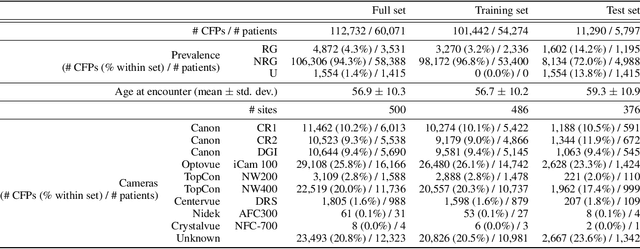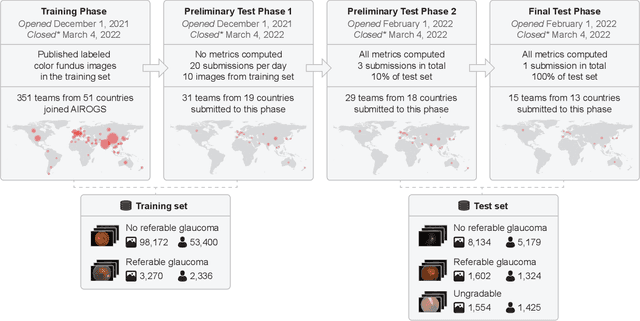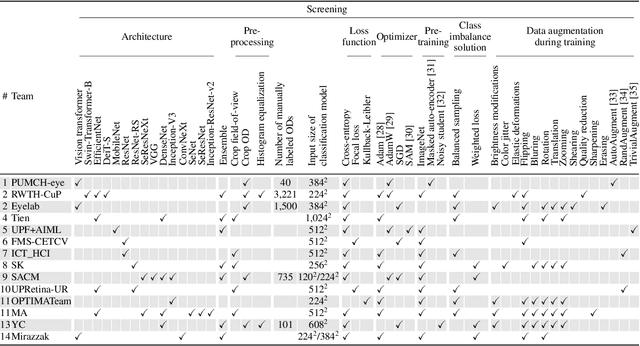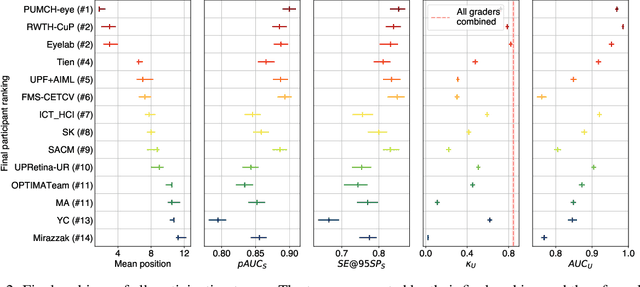Tien-Dung Le
AIROGS: Artificial Intelligence for RObust Glaucoma Screening Challenge
Feb 10, 2023



Abstract:The early detection of glaucoma is essential in preventing visual impairment. Artificial intelligence (AI) can be used to analyze color fundus photographs (CFPs) in a cost-effective manner, making glaucoma screening more accessible. While AI models for glaucoma screening from CFPs have shown promising results in laboratory settings, their performance decreases significantly in real-world scenarios due to the presence of out-of-distribution and low-quality images. To address this issue, we propose the Artificial Intelligence for Robust Glaucoma Screening (AIROGS) challenge. This challenge includes a large dataset of around 113,000 images from about 60,000 patients and 500 different screening centers, and encourages the development of algorithms that are robust to ungradable and unexpected input data. We evaluated solutions from 14 teams in this paper, and found that the best teams performed similarly to a set of 20 expert ophthalmologists and optometrists. The highest-scoring team achieved an area under the receiver operating characteristic curve of 0.99 (95% CI: 0.98-0.99) for detecting ungradable images on-the-fly. Additionally, many of the algorithms showed robust performance when tested on three other publicly available datasets. These results demonstrate the feasibility of robust AI-enabled glaucoma screening.
CAAD 2018: Generating Transferable Adversarial Examples
Sep 29, 2018



Abstract:Deep neural networks (DNNs) are vulnerable to adversarial examples, perturbations carefully crafted to fool the targeted DNN, in both the non-targeted and targeted case. In the non-targeted case, the attacker simply aims to induce misclassification. In the targeted case, the attacker aims to induce classification to a specified target class. In addition, it has been observed that strong adversarial examples can transfer to unknown models, yielding a serious security concern. The NIPS 2017 competition was organized to accelerate research in adversarial attacks and defenses, taking place in the realistic setting where submitted adversarial attacks attempt to transfer to submitted defenses. The CAAD 2018 competition took place with nearly identical rules to the NIPS 2017 one. Given the requirement that the NIPS 2017 submissions were to be open-sourced, participants in the CAAD 2018 competition were able to directly build upon previous solutions, and thus improve the state-of-the-art in this setting. Our team participated in the CAAD 2018 competition, and won 1st place in both attack subtracks, non-targeted and targeted adversarial attacks, and 3rd place in defense. We outline our solutions and development results in this article. We hope our results can inform researchers in both generating and defending against adversarial examples.
 Add to Chrome
Add to Chrome Add to Firefox
Add to Firefox Add to Edge
Add to Edge